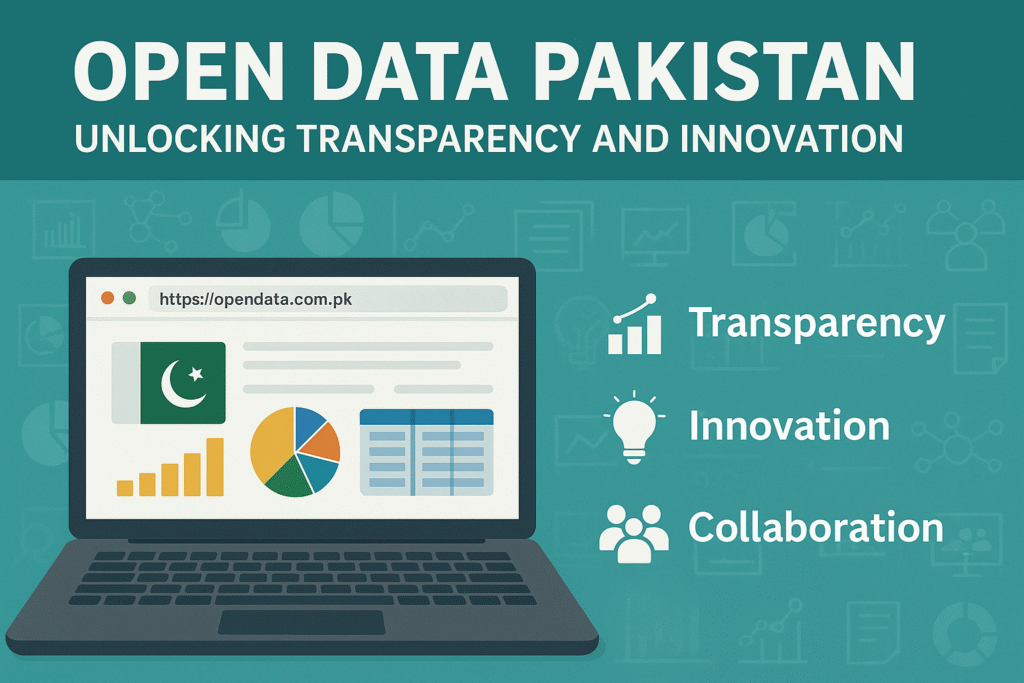
In an era where data drives decision-making, Pakistan has taken a significant step towards transparency and innovation with the launch of the Open Data Pakistan portal, accessible at https://opendata.com.pk. This initiative aims to provide free and open access to a wide array of datasets, fostering a culture of data-driven governance, public accountability, and research-based policy formulation.
Background and Objectives
The portal is a collaborative effort led by the National Center for Big Data and Cloud Computing (NCBC) at Lahore University of Management Sciences (LUMS), in partnership with the Higher Education Commission (HEC) of Pakistan. The NCBC, established in 2018, was tasked with solving national challenges through advanced analytics and the democratization of public data.
The portal’s overarching goals are threefold: First, to improve transparency by enabling the public to access and analyze government-generated data. Second, to drive innovation by offering researchers, developers, and entrepreneurs an opportunity to utilize open datasets for building applications, visualizations, and solutions. And third, to promote collaboration by connecting stakeholders in government, academia, civil society, and the private sector through shared access to consistent and credible datasets.
Since its launch, the Open Data Pakistan portal has hosted over 1,000 datasets across various categories, including health, education, environment, population, and the economy. At least 22 organizations have participated in data contribution, ensuring institutional ownership and periodic updates. The platform’s users span a wide range—from academic researchers and data journalists to civic technology developers and policy analysts.
Applications and Future Potential
Its transformative potential is significant. In governance, the availability of data on budgets, tenders, public expenditures, and service delivery can empower citizens, journalists, and oversight bodies to hold decision-makers accountable. In the health sector, public datasets on COVID-19, immunization coverage, and disease surveillance have already been used by researchers and the media to track developments and highlight gaps. For education, district-wise statistics on school enrollment, teacher deployment, and infrastructure allow for targeted policy intervention. In economic planning, access to real-time agricultural, energy, and labor force data can help small businesses and investors make informed decisions.
Despite these gains, there is substantial room for improving accessibility and enhancing the utility of the portal. First, standardizing the formats and classification of datasets across ministries and sectors would allow for easier integration and comparative analysis. Second, the user interface could be upgraded to support visual dashboards and auto-generated charts, enabling users with limited data expertise to benefit from the platform. Third, ensuring that data is presented in Urdu alongside English would make the portal inclusive for a broader segment of Pakistan’s population. Fourth, enabling APIs or data feeds for frequently updated datasets—such as prices, weather, and development projects—can support real-time use by media and developers.
Lastly, there is a need to build public trust and awareness around open data. This includes not only ensuring data accuracy and timeliness but also promoting data literacy through tutorials, events, and social media engagement. User-generated feedback mechanisms can help identify demand-side gaps and lead to the publication of more relevant and usable datasets.
By making data a public good, the Open Data Pakistan portal has laid the groundwork for smarter governance, inclusive decision-making, and evidence-based policy development. As Pakistan moves forward, strengthening and expanding this platform could serve as a cornerstone for digital governance and fiscal transparency across the country.
This Article was published on pbulicfinance.pk.
